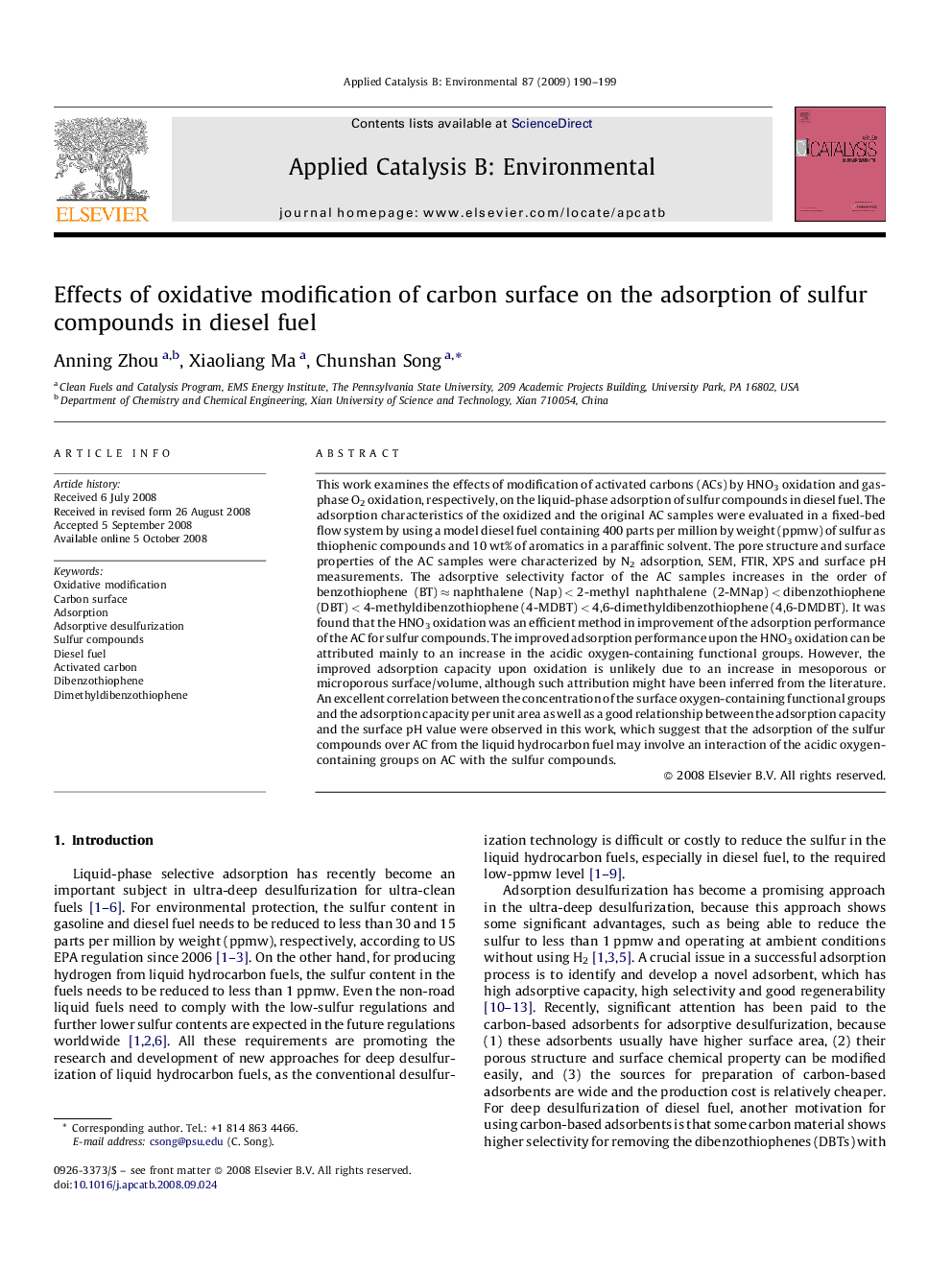| Article ID | Journal | Published Year | Pages | File Type |
|---|---|---|---|---|
| 48045 | Applied Catalysis B: Environmental | 2009 | 10 Pages |
This work examines the effects of modification of activated carbons (ACs) by HNO3 oxidation and gas-phase O2 oxidation, respectively, on the liquid-phase adsorption of sulfur compounds in diesel fuel. The adsorption characteristics of the oxidized and the original AC samples were evaluated in a fixed-bed flow system by using a model diesel fuel containing 400 parts per million by weight (ppmw) of sulfur as thiophenic compounds and 10 wt% of aromatics in a paraffinic solvent. The pore structure and surface properties of the AC samples were characterized by N2 adsorption, SEM, FTIR, XPS and surface pH measurements. The adsorptive selectivity factor of the AC samples increases in the order of benzothiophene (BT) ≈ naphthalene (Nap) < 2-methyl naphthalene (2-MNap) < dibenzothiophene (DBT) < 4-methyldibenzothiophene (4-MDBT) < 4,6-dimethyldibenzothiophene (4,6-DMDBT). It was found that the HNO3 oxidation was an efficient method in improvement of the adsorption performance of the AC for sulfur compounds. The improved adsorption performance upon the HNO3 oxidation can be attributed mainly to an increase in the acidic oxygen-containing functional groups. However, the improved adsorption capacity upon oxidation is unlikely due to an increase in mesoporous or microporous surface/volume, although such attribution might have been inferred from the literature. An excellent correlation between the concentration of the surface oxygen-containing functional groups and the adsorption capacity per unit area as well as a good relationship between the adsorption capacity and the surface pH value were observed in this work, which suggest that the adsorption of the sulfur compounds over AC from the liquid hydrocarbon fuel may involve an interaction of the acidic oxygen-containing groups on AC with the sulfur compounds.
